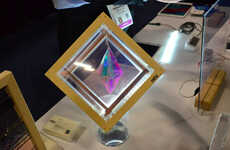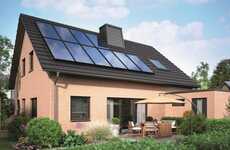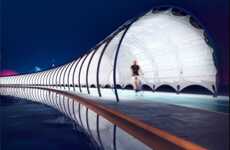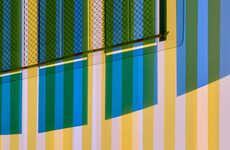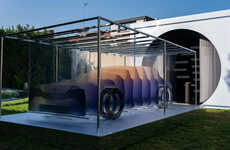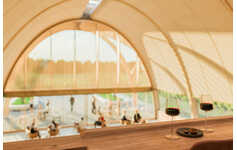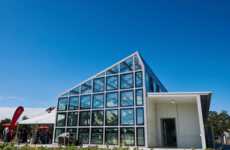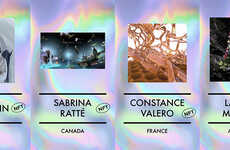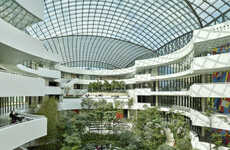
Florence Schöb Pairs Style, Functionality & Aesthetics
Many contemporary architecture and design firms are looking into photovoltaic facades in order to create sustainable buildings. Photovoltaic technology allows for the conversion of light into electricity through semiconducting materials that stimulate the photovoltaic effect.
Emerging designer Florence Schöb, a student at the Lucerne School of Art and Design, has envisioned a way to generate energy through photovoltaic technology in an aesthetically-driven manner. In other words, the student combines eye-catching appearances with the sustainable energy inherent in photovoltaic facades. Called '(In)visible,' Florence Schöb boasts a kit system that "provides a design basis for aesthetic deployment." This project makes a range of different facade designs possible, each generating unique "shifting color impressions from various distances."
This work was featured in Dezeen's latest school show.
Image Credit: Raphael Maurer, Dezeen
Emerging designer Florence Schöb, a student at the Lucerne School of Art and Design, has envisioned a way to generate energy through photovoltaic technology in an aesthetically-driven manner. In other words, the student combines eye-catching appearances with the sustainable energy inherent in photovoltaic facades. Called '(In)visible,' Florence Schöb boasts a kit system that "provides a design basis for aesthetic deployment." This project makes a range of different facade designs possible, each generating unique "shifting color impressions from various distances."
This work was featured in Dezeen's latest school show.
Image Credit: Raphael Maurer, Dezeen
Trend Themes
1. Aesthetically-driven Photovoltaics - Combining style and sustainability through photovoltaic technology to create an aesthetically pleasing energy source for buildings.
2. Design-driven Sustainability - Using design principles to create sustainable solutions that are both functional and eye-catching.
3. Flexible Facade Systems - Creating modular kits for photovoltaic facades to enable versatility in design.
Industry Implications
1. Architecture - Incorporating photovoltaic technology into building design to create sustainable, visually appealing structures.
2. Renewable Energy - Developing photovoltaic technology to be more than just a functional energy source, but also a focal point of design.
3. Interior Design - Integrating photovoltaic technology into interior spaces through aesthetically pleasing design elements.
4.3
Score
Popularity
Activity
Freshness


